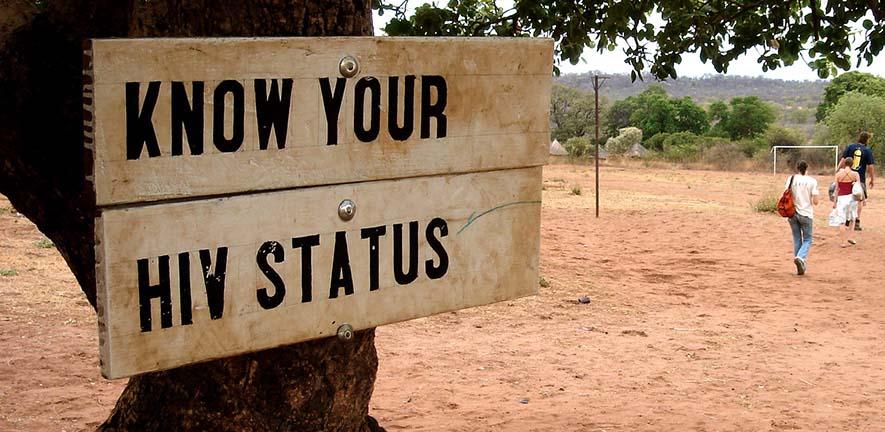
source: www.cam.ac.uk
An international team of researchers has found a genetic variant that may explain why some people of African ancestry have naturally lower viral loads of HIV, reducing their risk of transmitting the virus and slowing progress of their own illness.
Every time we discover something new about HIV control, we learn something new about the virus and something new about the cellHarriet Groom
Reported today in Nature, this is the first new genetic variant related to HIV infection discovered in over 25 years of research. It could, in the future, help direct the development of new treatment approaches for those living with HIV.
HIV remains a major threat to global health. According to UNAIDS, there were 38.4 million people living with HIV globally in 2021. A combination of pre-exposure drugs and medicines that dramatically reduce viral loads has had a major impact on transmission, yet 1.5 million people were newly infected in 2021. And while treatments have improved dramatically since the virus was first identified, 650,000 people still died from AIDS-related illnesses in that year.
Viral load is the amount of a virus in a patient’s system. Higher levels are known to correlate with faster disease progression and increased risk of transmission. But viral load varies widely among infected individuals, influenced by a number of factors including an individual’s genetic makeup.
Most of what we know about the relationship between our DNA and HIV comes from studies among European populations. But given that HIV disproportionately affects people on the African continent – more than 25 million people who are HIV-positive live on the continent – it’s important to better understand the role of genetics in HIV infection in African populations.
To investigate this question, researchers analysed the DNA of almost 4,000 people of African ancestry living with HIV-1, the most common type of the virus. They identified a variant within a region on chromosome 1 containing the gene CHD1L which was associated with reduced viral load in carriers of the variant. Between 4% and 13 % of people of African origin are thought to carry this particular variant.
Paul McLaren from the Public Health Agency of Canada’s National Microbiology Laboratory, joint first author, said: “African populations are still drastically underrepresented in human DNA studies, despite experiencing the highest burden of HIV infection. By studying a large sample of people of African ancestry, we’ve been able to identify a new genetic variant that only exists in this population and which is linked to lower HIV viral loads.”
CHD1L is known to play a role in repairing damaged DNA, though it is not clear why the variant should be important in reducing viral load. However, as HIV attacks immune cells, researchers at the University of Cambridge’s Department of Medicine, led by Dr Harriet Groom and Professor Andrew Lever, used stem cells to generate variants of cells that HIV can infect in which CHD1L had either been switched off or its activity turned down.
HIV turned out to replicate better in a type of immune cell known as a macrophage when CHD1L was switched off. In another cell type, the T cell, there was no effect – perhaps surprising since most HIV replication occurs in the latter cell type.
Dr Groom said: “This gene seems to be important to controlling viral load in people of African ancestry. Although we don’t yet know how it’s doing this, every time we discover something new about HIV control, we learn something new about the virus and something new about the cell. The link between HIV replication in macrophages and viral load is particularly interesting and unexpected.”
Co-author Professor Manjinder Sandhu from the Faculty of Medicine at Imperial College London said: “With more than a million new HIV infections a year, it’s clear that we still have a long way to go in the fight against HIV – we are yet to have a vaccine to prevent infection, have yet to find a cure and still see drug resistance emerging in some individuals. The next step is to fully understand exactly how this genetic variant controls HIV replication.”
The research in Cambridge was largely funded by the Medical Research Council. A full list of funders can be found in the research paper.
Dr Groom is a Research Fellow at Sidney Sussex College and Professor Andrew Lever is a Professorial Fellow Peterhouse, Cambridge.
Reference
McLaren, PJ; Porreca, I; Iaconis, G; Mok, HP, Mukhopadhyay, Sl; Karakoc, E et al. Africa-specific human genetic variation near CHD1L associates with HIV-1 load. Nature; 2 Aug 2023; DOI: 10.1038/s41586-023-06370-4
The text in this work is licensed under a Creative Commons Attribution-NonCommercial-ShareAlike 4.0 International License. Images, including our videos, are Copyright ©University of Cambridge and licensors/contributors as identified. All rights reserved. We make our image and video content available in a number of ways – as here, on our main website under its Terms and conditions, and on a range of channels including social media that permit your use and sharing of our content under their respective Terms.